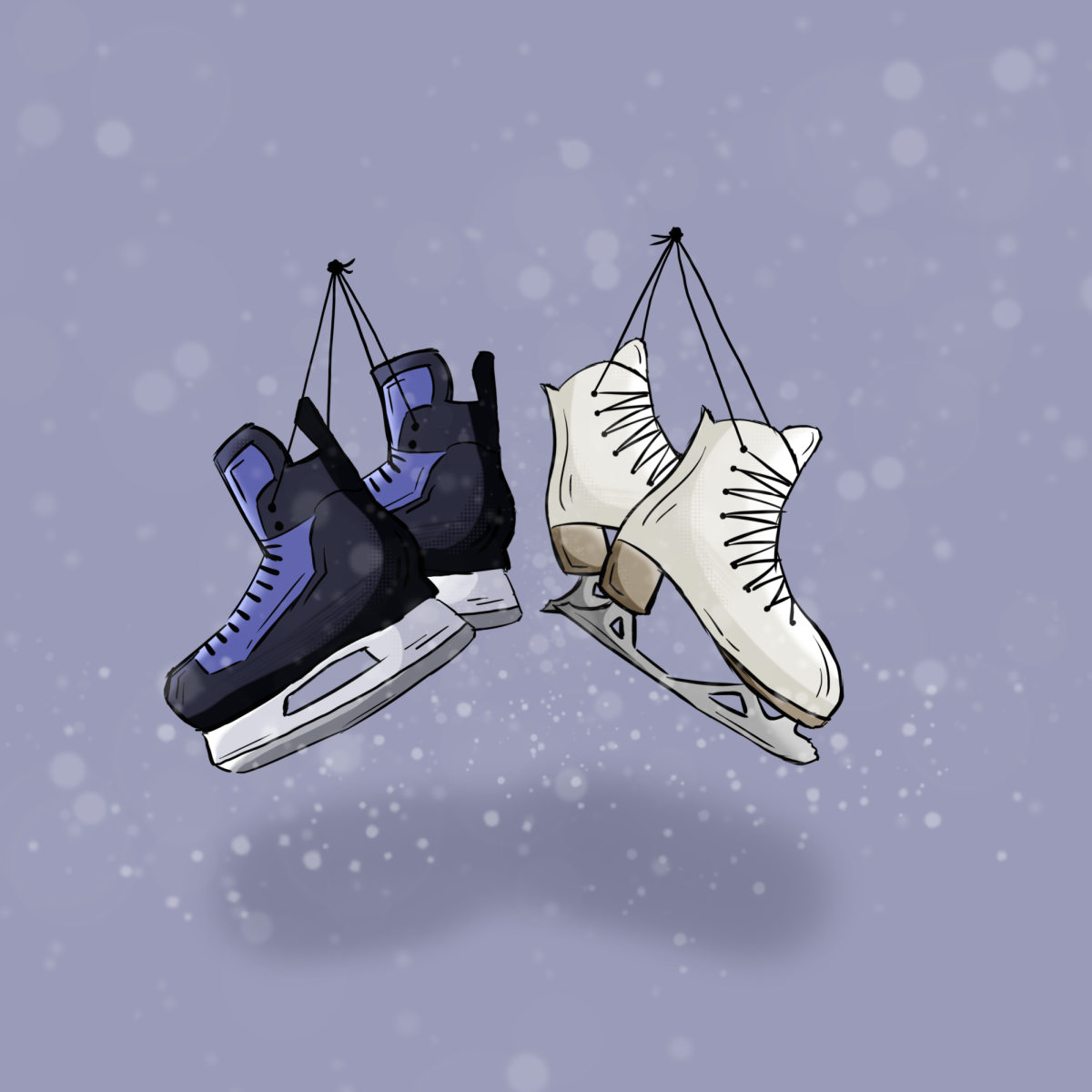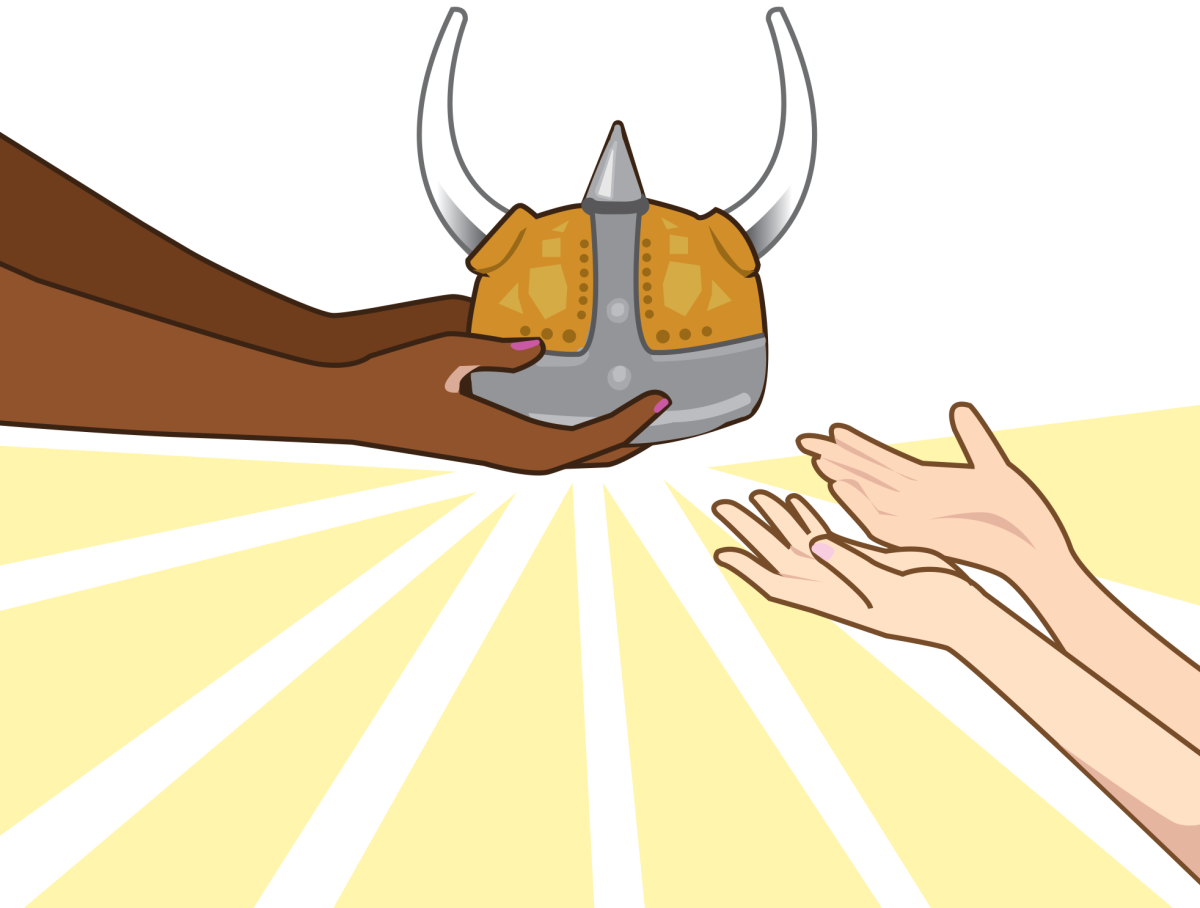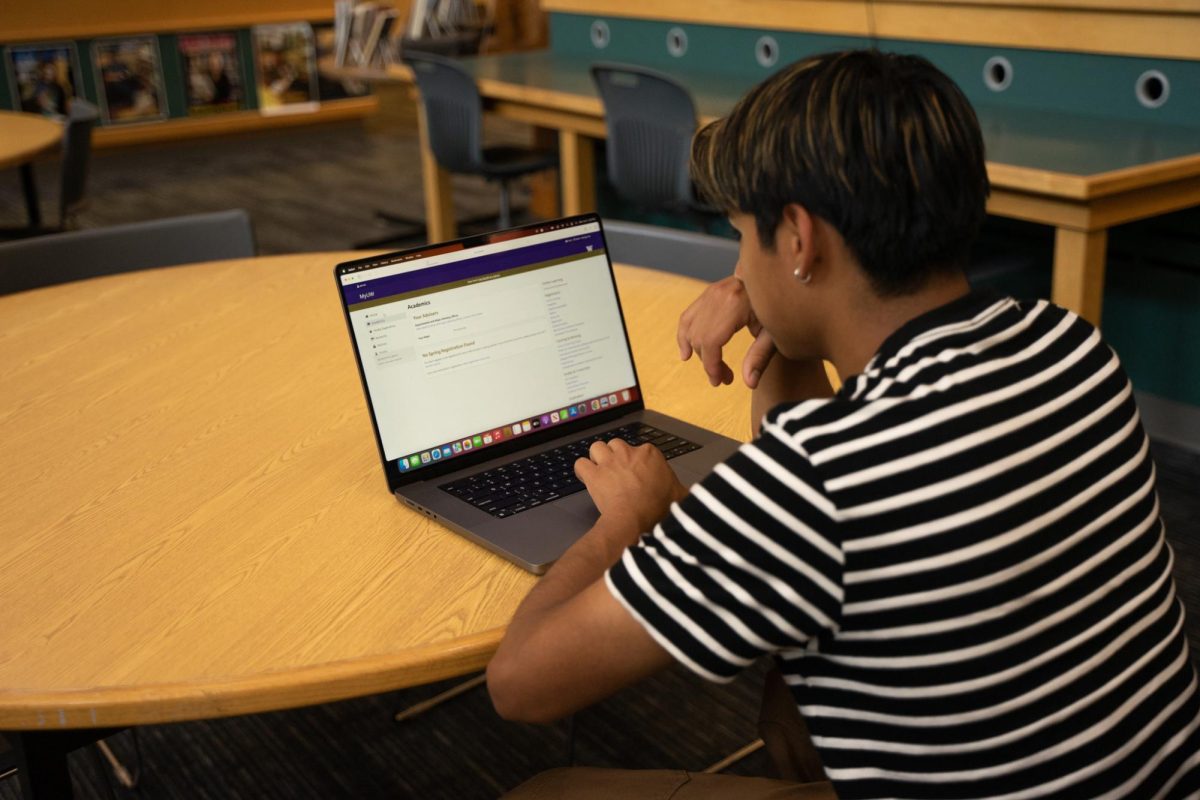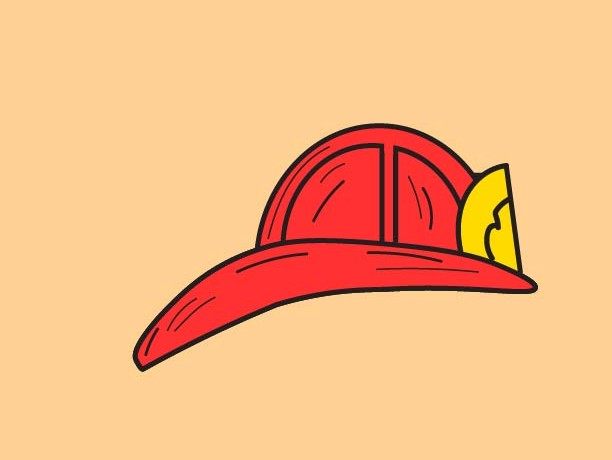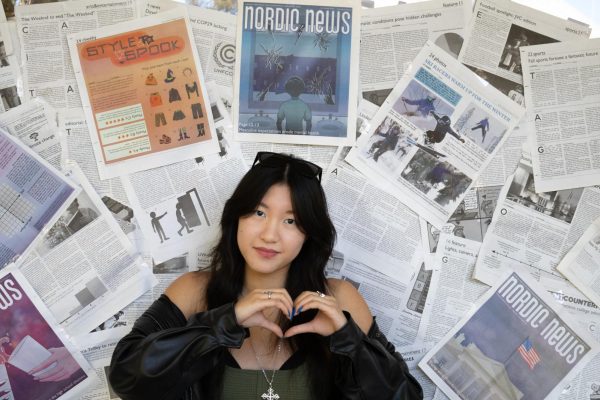Despite cold winds that persist in the Puget Sound area, culture around ice-based sports like hockey and ice-skating is lacking, so students interested in such athletics have to participate in them outside of school. Around North Seattle, there are three large ice rinks that provide their own youth leagues for hockey, and each work in collaboration with the U.S. Figure Skating Association.
Emily Cai
Freshman Emily Cai (any pronouns) has ice skated since they were in kindergarten. Each Saturday, Cai practices a Beetlejuice show with the Ice Theater of Seattle at Lynnwood Ice Center, which is a group of people performing on ice with more of a play structure, for a winter showcase coming up with the theme of Nightmare before Christmas. In addition, they also have competitions every spring.
One of Cai’s favorite tricks to do is a waltz jump toe loop, which is a 180 jump followed by two 360 jumps that start from the toe pick on the front of an ice skate. Additionally, they have a love-hate relationship with sit spins, a one-legged spin where a skater will slowly “sit down” with their other leg extended in front of them.
“I feel like teaching ice skating is a little difficult because you don’t really know how to explain it to them because it’s more of a thing where you have to experience it,” Cai said.
However, one of their most memorable moments in their life was during their summer camp in first grade.
“There was this one guy in my first grade class. He was in a summer camp to go ice skating, and he was just struggling, and I didn’t know what to do,” Cai said. “I don’t think he would let me help him because he was flailing around, trying to hold onto the railing, screaming, crying, and the camp counselors were trying to grab ahold of him and help him.”
Unlike their first grade classmate, Cai has a completely different perspective when it comes to ice skating.
“You don’t have to deal with friction, and it’s just like I am easier on ice than on land sometimes,” Cai said. “It’s just fun in general.”
Chase McCormick
Senior Chase McCormick (he/him) has played hockey for 10 years with the Sno-King Amateur Hockey Association in Kirkland. His inspiration to take up the sport came from his older brothers, who played before him. He enjoys how hockey is different from other sports.
McCormick practices 3-4 times a week for up to three hours, and is a full IB student. He said that managing his busy schedule and keeping up with school and social activities can be a serious difficulty.
“It’s really hard for me. And it’s just a challenge I chose to take, so it’s kind of my fault,” McCormick said.
Another struggle hockey players may face is the financial burden. On average, a basic set of hockey gear can cost upwards of $600, not including the price of ice time, competition fees and training.
“It’s hard to support hockey because it’s so expensive. But just ice-skating itself, it’s really hard to just skate, and that’s just the basics,” McCormick said.
Despite the challenges, McCormick said he continues to play hockey because of his love and commitment to the sport.
“I want to play in college, and I just really like it,” McCormick said. “And I’ve been playing for a while, so I can’t really switch now.”
Amy Staneff

Sophomore Amy Staneff (any pronouns) has been ice skating for a skating club in Sno King Ice Arena in Kirkland since they were four years old, and they go to the rink once or twice a week. Staneff said that they still find joy through ice skating, even after all these years.
“Just learning new tricks and being able to do tricks that I used to not be able to do but now I am,” Staneff said.
In addition, Staneff said that it can be difficult to get a specific skill to stick — being able to do it once doesn’t guarantee they’ll be able to do it again.
“One day, I can do something, and then the next it’s like gone,” Staneff said. “There’s good spin days or jump days, and then there’s bad ones.”
One time, Staneff spent an entire summer working on a single spin that they just couldn’t figure out how to do, but the moment they managed to successfully, they felt so happy and accomplished.
“I believe that sports that are more centered around artistry are harder than sports that are like football or hockey, where it’s mostly just passing around a ball,” Staneff said. “Like, if you fall down on ice skating, you have to just get up no matter how hurt you feel.”
Last year, Staneff sprained their ankle and couldn’t skate for a couple of months because they continued doing activities without realizing it was sprained in the first place. Recently, they also sprained their knee, so they haven’t been able to work on a challenging skill called an axel, which is a multi-rotational jump. But regardless of the possibility of injury, Staneff continues to ice skate.
“I just find it freeing, and my pain goes away when I skate,” Staneff said. “It’s been something that I’ve been doing for so long, and it feels like home right now.”



